Gerbing 7 volt battery-operated — back wrap and kidney warming belt — a review — aimed at mountain bikers with cool season and winter lumbar spine problems
© 2017 Peter Free
03 February 2017
Introduction — clearing up anticipated confusion
This review is in two parts:
The first explains the branding confusion that applies to the Gerbing-manufactured lower spine warming belt.
The second explains the cool season mountain biking use to which I put it.
This review will be of most interest to people with disco-neural problems in their lower spines.
Jumping ahead to my conclusion, the Gerbing warming belt works well for my athletic-medical purpose.
The tested product — is a "Core" rebranded version — of the Netherlands' Gerbing branded kidney warming belt
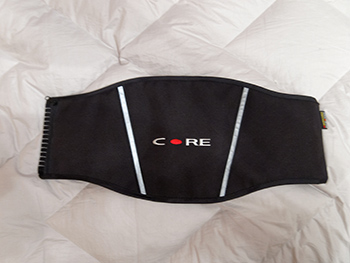
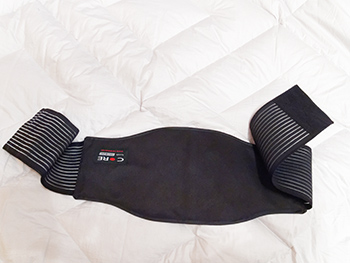
You can treat this review as applicable to both Core and Gerbing 7 volt belts.
Core, once located at www.CoreHeat.net, appears to be out of business. Their website is gone from the Internet. My discounted sample of the Core belt came from the Warming Store, here.
The Core belt is identical to the Gerbing kidney belt. You can see the Gerbing version, here — provided that Gerbing's poorly functioning website is working at all.
The Core belt's included materials, including its 7 volt battery and charger are explicitly Gerbing branded. There is no mention of Core, except via a logo stitched to the belt.
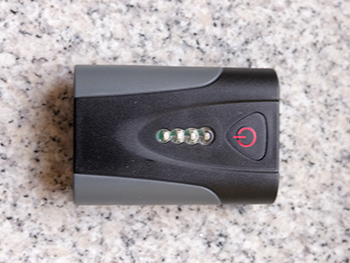
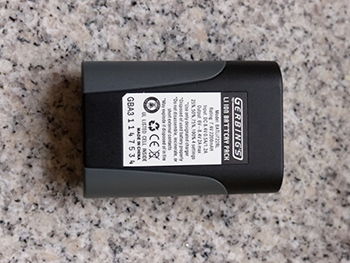
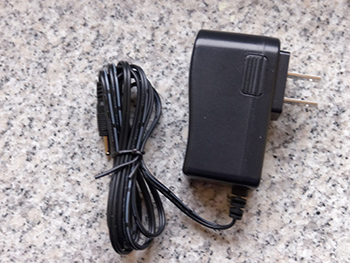
Distinguishing between Gerbing's two lines of electrically warmed clothing
Gerbing markets its battery operated "nanowire" warming technology in 7 and 12 volt versions. The 12 volt units plug into the electrical systems of whatever vehicle you are on. The 7 volt versions are self-contained and run on small rechargeable and replaceable Lithium ion batteries.
The 7 volt battery for the back wrap (kidney) belt fits into a zippered compartment on its left side. The belt is symmetrical. You can flip it upside down and have the battery on the right side.
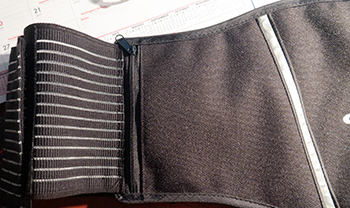
Quality that seems to work
These products are made in China according to their labels. I was a little surprised at the noticeably good quality feel to the belt itself. The warming part of the belt's fabric is of substantial weight and thickness. Its Velcro adjusting belt is stretchy and durably supportive.
The heated area does not cover the entirety of the non-stretch part of the belt. Think of it as covering mainly the lumbar (or lower thoracic) portion of the human spine, depending upon where you have the belt situated.
My athletic-medical purpose in using this belt
Last year, I had neurosurgery to rescue the disc-compressed dorsal root ganglia of one portion of the sciatic nerve. Anatomically, the DRG is probably the most painful portion of any nerve root to compress.
Though accustomed to radicular pain and functional symptoms from various levels in both my lumbar and cervical spine, this DRG-specific problem got my attention. Uninterrupted pain levels were constant 8-9s on the ten point U.S. Department of Defense and Veterans Pain Rating Scale.
This went on for weeks. It is not an episode that I want to repeat. Though noticeable foot drop and mild radicular symptoms remained after surgery — which took place 3 months into the episode — I was really happy with the surgery's pain relief.
Enter the warming belt — avoiding a recurrence of injury in cool to cold temperatures
The only thing that keeps ordinary disc-nerve root repairs in place is scar tissue. Recurrences of nerve root compression are common.
In my case, the original episode began by rupturing a disc during a mountain bike ride in the rain at about 39-42 degrees Fahrenheit. My only notice of injury came when I caught my left foot on a door jamb afterward. I either heard or felt a pop.
When the usual set of radicular symptoms did not manifest by the following day, I went out on my road bike. Same weather conditions.
That night, the ordeal began. Evidently, the more stretched position of the road bike had encouraged the ruptured disc to slide atop the dorsal root ganglia of a portion of one of the sciatic nerve roots.
As a result, after post-surgery rehab, I had to get rid of the road bike. Its aggressive reach put too much strain on the L4-L5 repair. And I had to shorten the less pronounced reach of my mountain bike by raising its handlebars. This worked well enough in warm weather.
When cool and cold weather arrived, I noticed that the surgical area was re-experiencing the tightness that had preceded the original injury.
Why the warming belt?
In the beginning, I tried layering clothing to keep my back warm and supposedly more flexible. My hypothesis was that the cold was contracting paraspinal muscles and tissue around the vertebral joints and making everything more likely to rupture. Presumably (given the history of the original injury) this elevated the risk for another nerve root compression.
Layering my clothing did not work. My lumbar spine was always cold, even when the temperature was only in the low 40s Fahrenheit. I surmised that there is not enough tissue mass and blood flow over near surface bone to allow layering to work.
I ordered the Core belt on the hypothesis that externally provided heat might keep the surgical repair site flexible.
Here comes the dumb part — before the belt arrived
I provide this section as an example of the stream of sometimes unwise accommodations and compromises that we make as we age. Sometimes we can go too far in pushing the boundaries of what makes sense. I seem to do this relatively often.
While waiting for the belt to arrive — but still wanting to ride — I tried modifying my riding position to reduce the strain on the lumbar repair. On rough ground, I stood on the pedals. This obviously raises one's center of gravity and makes bike control somewhat more difficult over bumps.
One day in late December, I made the mistake of getting off the saddle going downhill on mildly lumpy ground. The inevitable happened and I went over the handlebars — giving my head a good knock, breaking ribs and tearing muscle. My metal frame glasses broke. The sharp fractured nosepiece could easily have put an eye out.
At the time, I was riding with vestibular balance problems. These were probably due to virus-caused sensorineural deafness that had made me completely (and permanently) deaf on one side, 3 months earlier. The virus had evidently also affected the vestibular nerve on that side.
I had not previously noticed a negative effect on my riding, so I cannot say whether the vestibular condition contributed to the over-the-bars episode. I have gone over the bars often enough even before the virus nailed my hearing and balance.
This episode was not (I still think) as stupid as it sounds. The last two years, I have been riding with lingering after effects from a mild traumatic brain injury (TBI). Riding appears to have helped the recovery.
The point is that you just never know what you should try to get away with before resigning yourself to the trash bin.
How I wear the Gerbing belt
I put the belt over thin (meaning athletically active use) long underwear. I imagine that positioning it over more layers of clothing would defeat its purpose.
Does the Gerbing warming belt work? — Yes
This belt works well for my purpose. The battery provides 4 levels of selectable heat. The hot setting reportedly works for 2 hours. The next step down lasts 3.
My first test of the belt was at its second from highest setting (the 3 hour one). The ambient outdoor temperature was 46 degrees Fahrenheit. With the belt on, I noticed much less tightness at the site of neural repair. Not summertime comfort, but close enough to make riding workable. I was able to stay in the saddle, without worrying much about jarring or tearing scar tissue loose.
The next day was a degree cooler with misting rain. These conditions felt noticeably colder than the first test. The belt, however (still on its second highest setting) provided the same comfort. I was impressed because ordinarily this would have been an uncomfortable, wettish ride.
Recommended — especially to people with athletic-medical purposes similar to mine
I am not saying that the Gerbing kidney belt will prevent reinjury of surgical sites like mine. But it certainly feels as if it might keep the affected area more flexible and less likely to tear or rupture.
To my (possibly foolish) way of thinking, this belt-caused increase in cool weather riding confidence is enough to keep me riding at those times.
What more can one ask of a product like the Gerbing?
 PeteFree.com
PeteFree.com